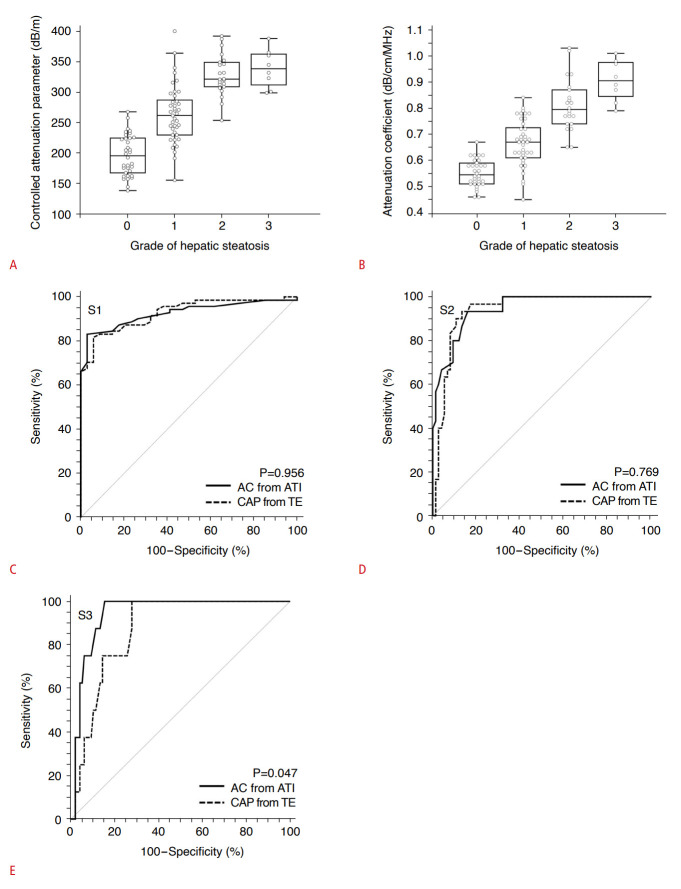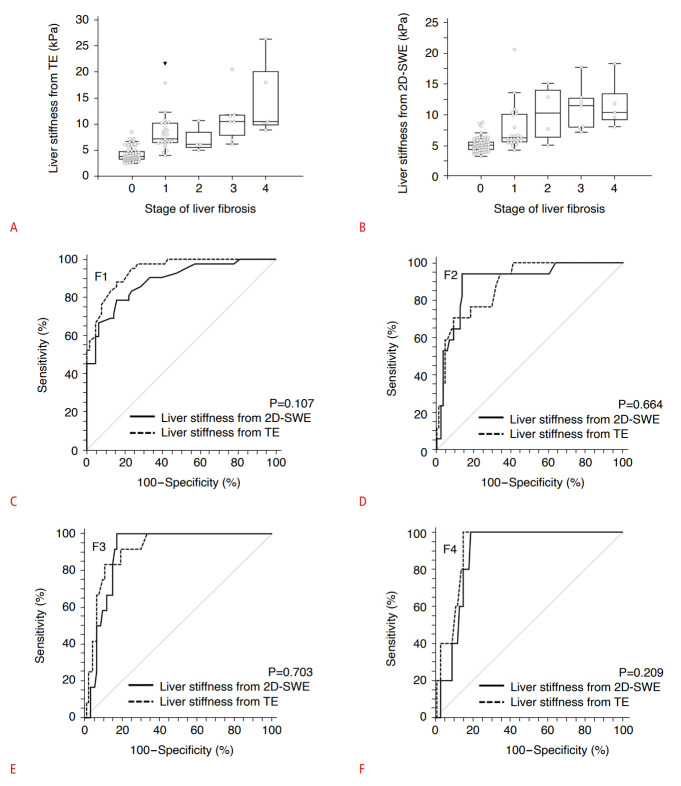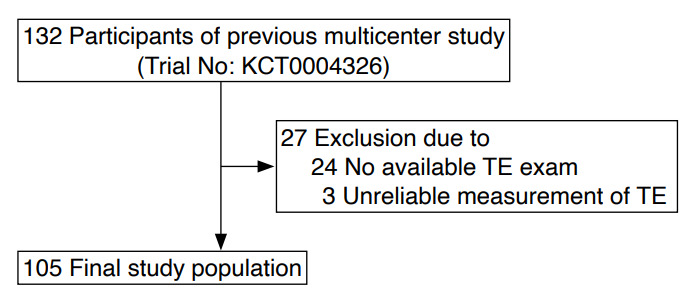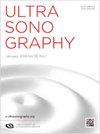Transient elastography with controlled attenuation parameter versus two-dimensional shear wave elastography with attenuation imaging for the evaluation of hepatic steatosis and fibrosis in NAFLD.
IF 2.5
3区 医学
Q2 RADIOLOGY, NUCLEAR MEDICINE & MEDICAL IMAGING
引用次数: 1
Abstract
Purpose This study compared the controlled attenuation parameter (CAP) to attenuation imaging (ATI) in the diagnosis of steatosis and transient elastography (TE) to two-dimensional shear wave elastography (2D-SWE) for the diagnosis of fibrosis in a prospectively constructed nonalcoholic fatty liver disease (NAFLD) patient cohort. Methods Participants who underwent TE with CAP were included from a previously constructed NAFLD cohort with multiparametric ultrasound data. The degree of hepatic steatosis and stage of liver fibrosis were assessed. Diagnostic performance was evaluated using the area under the receiver operating characteristic curve (AUROC) for the grades of steatosis (S1-3) and fibrosis (F0-F4). Results There were 105 participants. The distribution of hepatic steatosis grades (S0-S3) and liver fibrosis stages (F0-F4) was as follows: S0, n=34; S1, n=41; S2, n=22; S3, n=8; F0, n=63; F1, n=25; F2, n=5; F3, n=7; and F4, n=5. No significant difference was found between CAP and ATI in detecting ≥S1 (AUROC: 0.93 vs. 0.93, P=0.956) or ≥S2 (0.94 vs. 0.94, P=0.769). However, the AUROC of ATI in detecting ≥S3 was significantly higher than that of CAP (0.94 vs. 0.87, P=0.047). Regarding the detection of liver fibrosis, no significant difference was found between TE and 2D-SWE. The AUROCs of TE and 2D-SWE were as follows: ≥F1, 0.94 vs. 0.89 (P=0.107); ≥F2, 0.89 vs. 0.90 (P=0.644); ≥F3, 0.91 vs. 0.90 (P=0.703); and ≥F4, 0.88 vs. 0.92 (P=0.209). Conclusion 2D-SWE and TE showed comparable diagnostic performance in assessing liver fibrosis, and ATI provided significantly better performance in detecting ≥S3 steatosis than CAP.



控制衰减参数的瞬时弹性成像与衰减成像的二维横波弹性成像评价NAFLD的肝脂肪变性和纤维化。
目的:本研究在前瞻性非酒精性脂肪性肝病(NAFLD)患者队列中比较了控制衰减参数(CAP)与衰减成像(ATI)诊断脂肪变性和瞬时弹性成像(TE)与二维横波弹性成像(2D-SWE)诊断纤维化。方法:从先前构建的具有多参数超声数据的NAFLD队列中纳入了CAP伴TE的参与者。评估肝脂肪变性程度和肝纤维化分期。使用受试者工作特征曲线下面积(AUROC)评估脂肪变性(S1-3)和纤维化(F0-F4)等级。结果:共105人。肝脂肪变性分级(S0 ~ s3)和肝纤维化分期(f0 ~ f4)分布如下:S0, n=34;S1, n = 41;S2, n = 22;S3, n = 8;F0, n = 63;F1, n = 25;F2, n = 5;F3, n = 7;F4, n=5。CAP和ATI在检测≥S1 (AUROC: 0.93比0.93,P=0.956)和≥S2(0.94比0.94,P=0.769)方面无显著差异。ATI检测≥S3的AUROC显著高于CAP (0.94 vs. 0.87, P=0.047)。在肝纤维化的检测方面,TE与2D-SWE无明显差异。TE和2D-SWE的auroc分别为:≥F1,分别为0.94和0.89 (P=0.107);≥F2, 0.89 vs. 0.90 (P=0.644);≥F3, 0.91 vs. 0.90 (P=0.703);≥F4, 0.88 vs. 0.92 (P=0.209)。结论:2D-SWE和TE在评估肝纤维化方面的诊断性能相当,ATI在检测≥S3脂肪变性方面的表现明显优于CAP。
本文章由计算机程序翻译,如有差异,请以英文原文为准。
求助全文
约1分钟内获得全文
求助全文
来源期刊

Ultrasonography
Medicine-Radiology, Nuclear Medicine and Imaging
CiteScore
5.10
自引率
6.50%
发文量
78
审稿时长
15 weeks
期刊介绍:
Ultrasonography, the official English-language journal of the Korean Society of Ultrasound in Medicine (KSUM), is an international peer-reviewed academic journal dedicated to practice, research, technology, and education dealing with medical ultrasound. It is renamed from the Journal of Korean Society of Ultrasound in Medicine in January 2014, and published four times per year: January 1, April 1, July 1, and October 1. Original articles, technical notes, topical reviews, perspectives, pictorial essays, and timely editorial materials are published in Ultrasonography covering state-of-the-art content.
Ultrasonography aims to provide updated information on new diagnostic concepts and technical developments, including experimental animal studies using new equipment in addition to well-designed reviews of contemporary issues in patient care. Along with running KSUM Open, the annual international congress of KSUM, Ultrasonography also serves as a medium for cooperation among physicians and specialists from around the world who are focusing on various ultrasound technology and disease problems and relevant basic science.
 求助内容:
求助内容: 应助结果提醒方式:
应助结果提醒方式:


